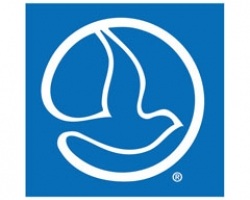South Coast Air Quality Management District inspectors last week issued a violation notice to a crude oil tanker berthed in Long Beach for fugitive emissions, according to a statement issued by the regional anti-pollution agency. The press release described the violation notice as an action aimed at identifying and mitigating elusive coastal odors.
However, a copy of the notice was not available on the AQMD “Notice of Violation Inquiry System” as of Monday, Nov. 12.
“For the past two years we have devoted extensive resources to finding the sources of periodic foul odors in Long Beach, Seal Beach and Huntington Beach,” said Wayne Nastri, the Air Quality District’s executive officer.
The odor issue has primarily affected Old Town and Hill residents in Seal Beach, in addition to residents and employees in neighboring coastal cities.
In her newsletter to District One constituents, Councilwoman Ellery Deaton wrote: ““Finally. After two years of investigation, the AQMD has released findings and have cited a crude-oil tanker for the foul, noxious odors we have continually reported over the last few years. Thank you to everyone who has called to report the odors, those who testified before the AQAMD Board, and to city staff and firefighters who helped monitor and report. Thank you to the AQMD for their diligent work as they took our reports very seriously. The investigation continues. So, please, call 1-800-CUTSMOG (1-800-288-7664) for any foul odors. Working together we will stop the polluters.”
As previously reported in the Sun, at times coastal area cities have reported foul odors that have been compared to petroleum, sulfur or rotten eggs. In August 2017, for example, Sam Atwood, a spokesman for the Air Quality District, there were some indications that at least some of the odors have been coming from an offshore source such as a ship—perhaps an oil tanker. Atwood said that traces of petroleum compounds had been found in air samples collected in Seal Beach.
Seal Beach residents and fire fighters in coastal cities have been collecting air samples as part of the Air Quality District coastal odor investigation.
This week, Nastri said: “Using a combination of dedicated field staff, advanced emissions imaging technology, atmospheric modeling and in-house laboratory analysis, now for the first time we have confirmed one potential source of these odors,” Nastri said.
On Tuesday, Nov. 6, Air Quality District inspectors issued a Notice of Violation to GAC North America, the Long Beach-based shipping agent for the Nave Photon oil tanker. The 2-million barrel tanker is flagged in Hong Kong and transports crude oil from Middle Eastern countries to the West Coast of the United States.
Air Quality District inspectors found that seven of 10 inspected pressure release devices on the ship were leaking hydrocarbon vapors well in excess of limits in the agency’s Rule 1142 – Marine Tank Vessel Operations. The leaks were documented with portable hydrocarbon detection devices as well as gas imaging cameras.
According to Air Quality District officials, representatives of Tesoro – the operator of the terminal where the ship was berthed – said they would contact the ship owner to ensure that leaking valves are repaired.
Air Quality District started tracking the ship on Oct. 26, when it received three complaints of petroleum-type odors in the Long Beach area. Based on the location of the ship in the Long Beach harbor, which was upwind of the complainants, as well as gas images captured by inspectors showing vapor leaks from the vessel, Air Quality District decided to follow up with an onboard inspection when the ship docked on Nov. 3 at Tesoro’s marine terminal.
According to the Air Quality District’s announcement, the investigation is ongoing and inspectors are continuing to evaluate potential violations of other agency rules.
Since Jan. 1, 2016, the district has received more than 2,000 complaints from residents in Long Beach, Seal Beach and Huntington Beach of petroleum, sulfur and/or chemical-type odors. During these odor incidents, SCAQMD inspectors were not able to identify a source; however, an analysis of wind patterns strongly suggested an offshore source of the odors.
Air Quality District partnered with fire departments in Seal Beach, Long Beach, and Huntington Beach and trained their personnel to collect air samples during odor incidents. Analysis of these samples in Seal Beach’s laboratory showed higher levels of chemical compounds including several hydrocarbons and sometimes hydrogen sulfide, all indicative of an odor source from crude oil and/or unprocessed natural gas. Crude oil contains dissolved hydrocarbon and sulfur gases that can be released to the atmosphere if not properly contained in the vessel’s storage tanks. According to the AQMD, Hydrocarbon levels found in the majority of the air samples were not expected to cause short-term health problems because the levels were below acute reference exposure levels. The AQMD statement also said short-term exposures to these pollutants are unlikely to have much impact on an individual’s risk of chronic health problems, such as cancer.










